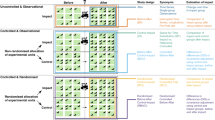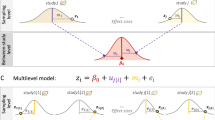Abstract
Whatever the appeal of extreme integrism or holism, science is necessarily more utilist and partial. We can only address our environmental problems scientifically if we identify the most pressing and attack them first. To do so, we must break with the monistic ideals and traditions of both theoretical and mechanistic ecology to pursue particular solutions instead of global models. Statistical analysis of empirically identified patterns has proven effective in providing such solutions, perhaps because empirical patterns are less valueladen than theoretical or mechanistic alternatives or because such patterns are closer to experience and easier to understand. Unfortunately, such simple analyses are often less valued by leading ecologists who seek intellectual content rather than predictive power and practicality. To overcome this barrier to actionable information, the body of scientists must reaffirm their commitment to environmental action through their work as journal referees, grant reviewers, scientific critics and teachers.
Similar content being viewed by others
References
Cartwright, N.: 1983, How the Laws of Physics Lie, New York: Oxford University Press.
Clark, W. C., Jones, D. D., and Holling, C. S.: 1979, ‘Lessons for Ecological Policy Design: A Case Study of Ecosystem Management’, Ecol. Model. 7, 1–53.
Cole, J. R. and Cole, S.: 1972, ‘The Ortega Hypothesis’, Science 178, 368–375.
De Solla Price, D. J.: 1986, Little Science, Big Science... and Beyond, New York Columbia University Press.
Dillon, P. J. and Rigler, F. H.: 1973, ‘The Phosphorus-Chlorophyll Relationship in Lakes’, Limnol. Oceanogr. 19, 767–773.
Garfield, E.: 1985, ‘Uses and Misuses of Citation Frequency’, Curr. Cont. 16, 3–9.
Joergensen, S. E.: 1986, ‘Developments in Ecological Modelling’, in A. Giorgini and F. Zingales (eds.) Agricultural Non-Point Source Pollution, Model Selection and Application, Amsterdam, Elsevier, pp. 37–53.
Norgaard, R. B.: 1990, ‘Barriers Between Environmental Science Data and Socially Actionable Information’, Environm. Monit. Assesm. 00,00-000 (this volume).
Paine, R. T.: 1977, ‘Controlled Manipulations in the Marine Intertidal Zone and Their Contributions to Ecological Theory’, in C. E. Goulden, The Changing Scenes in Natural Sciences, Philadelphia Academy of Natural Sciences pp. 245–270.
Peters, R. H.: 1991, A Critique for Ecology, Cambridge, Cambridge University Press (in press).
Pielou, E. C.: 1981a, ‘The Usefulness of Ecological Models: A Stock-Taking’, Quart. Rev. Biol. 56, 17–31.
Rigler, F. H.: 1975b, ‘Nutrient Kinetics and the New Typology’, Verh. Internat. Ver. Limnol. 19, 197–210.
Regier, H. A.: 1990, ‘Studies of Ecosystem Sustainability: A Synthesis of Analytical Science and Contextual History Across Disciplines’, Environm. Monit. Assessm.
Schoener, T. W.: 1986, ‘Mechanistic approaches to Community Ecology: A New Reductionism?’, Amer. Zool. 26, 81–106.
Russell, B.: 1946, A History of Western Philosophy. London, George Allen and Unwin, 842 p.
Tilman, D.: 1987, ‘The Importance of Mechanisms of Interspecific Competition’, Amer. Nat. 129, 769–774.
Vollenweider, R. A.: 1968, ‘Scientific Fundamentals of Eutrophication of Lakes and Flowing Waters with Special Reference to Phosphorus and Nitrogen’, OECD Paris. OECD/DAS/CSI/68.27.
Vollenweider, R. A.: 1987, ‘Scientific Concepts and Methodologies Pertinent to Lake Research and Lake Restoration’, Schweiz. Z. Hydrol. 49, 129–147.
Walters, C. J.: 1986, Adaptive Management of Renewable Resources, New York, Macmillan.
Watt, K. E. F.: 1975, ‘Critique and Comparison of Biome Ecosystem Modelling’, in B. C. Patten (ed.), Systems Analysis and Simulation in Ecology, New York, Academic, pp. 139–152.
Author information
Authors and Affiliations
Rights and permissions
About this article
Cite this article
Peters, R.H. Scientific barriers. Environ Monit Assess 20, 127–134 (1992). https://doi.org/10.1007/BF00407502
Received:
Issue Date:
DOI: https://doi.org/10.1007/BF00407502




